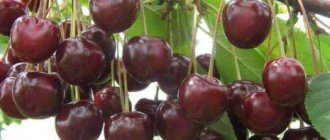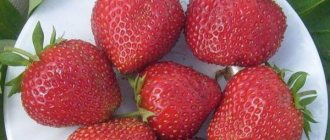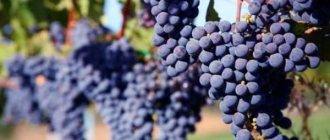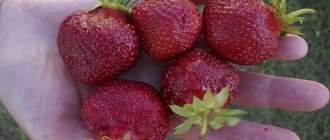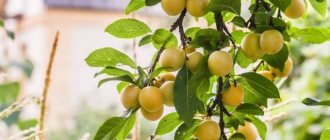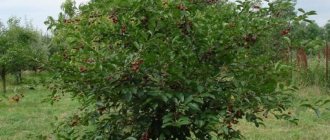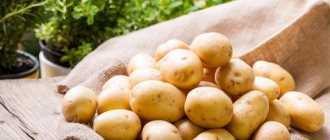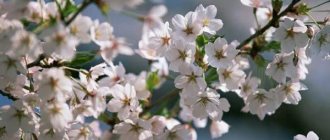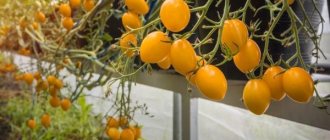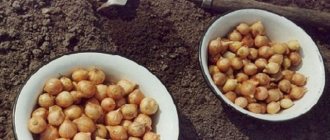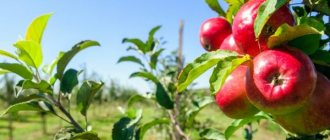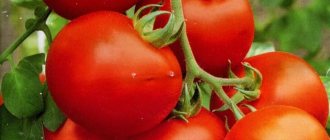Harvesting
Cherry Miracle is an early variety, so weather is one of the main factors in the speed of harvest ripening.
If the summer is hot, then the cherries ripen in the first half of June. In moderate weather, the ripening rate is slightly lower - by the end of June. Fruiting occurs very early. But the first harvests are not very large. Starting from the 4th year, the Miracle cherry begins to produce full harvests. From one tree you can collect up to 10 kg of juicy fruits.
It is best to pick cherries in the first half of the day, after the dew has dried. Or move a pleasant activity to the afternoon, when the sun's rays slightly reduce their activity. For transportation or storage, cherries must be plucked from the stem or carefully cut with scissors, leaving a small part of the stalk. When harvested this way, the berries will retain their beautiful appearance for a long time without signs of spoilage.
Cherry harvest is a lot of fun
There is another, fastest and easiest way to pick cherries, it is called the “milking” method. The berries are picked from the tree without the stalk. This method is good only if the cherry fruits will be eaten immediately or will be processed. Such a berry will not sit for long; within a day it will begin to lose juice and deteriorate.
Cherries without stems cannot be stored for long
Whole fruits with stems, placed in storage containers in a not too large layer, can be stored at a temperature of 6°C for up to 3 weeks. Frozen fruits will last for a whole year.
Cherry miracle is a very healthy food product. It contains valuable natural substances and compounds. It has a bactericidal and anti-inflammatory effect on the human body. Used to prevent tumors and iron deficiency. And most importantly, it strengthens the immune system. Therefore, fresh cherries are useful. Moreover, gradual maturation allows you to enjoy the taste and benefits for a long time.
Miracle cherries are also good for processing. Preserves, jams, juices, liqueurs, compotes, berries in their own juice and many other wonderful-tasting preparations are made from this wonderful berry.
Dumplings with cherries can be prepared from fresh cherries or from frozen ones.
Description of fruits
Ripe cherries are voluminous, the weight of one berry reaches 6 grams. The shape varies and can be round and flattened or heart-shaped. The skin is dark cherry color, the flesh is bright red, with small light veins. The tender berries are fleshy and juicy, with a pleasant sour-sweet taste. Tasting score – 4.2. Inside the cherry there is a large pit that is easily separated from the pulp.
In a favorable year, up to 50 kg of harvest can be harvested from 1 adult cherry. In a typical year, 25-45 kg of fruit are removed from the tree. Cherries are mainly used for making jam, juice and compote. But, due to their high vitamin content, the berries are also recommended for fresh consumption.
Description of the variety and fruiting characteristics of cherry Garland, planting and care
Before purchasing Garland cherries, study the description of the variety and all its characteristics. Finding a good cherry-cherry hybrid is quite difficult. But the Garland variety is one of those hybrids that combines the best characteristics of cherries and sweet cherries.
History of selection
The hybrid was bred by breeder A. Ya. Voronchikhina. To create a new variety, the Krasa Severa and Zhukovskaya dukes were used.
Description
The description of the variety begins with the characteristics of the tree. The plant is not tall, reaching a height of about 2.5 m. The crown is round in shape, the density of branches is weak. The leaves are large, rich green in color, the leaf surface is matte. Often the leaves have an asymmetrical shape.
The inflorescences are large, pinkish in color, collected in bouquets of 3-5 flowers. The diameter of the inflorescence is 3-4 cm. The fruits of the Garland are large, the average weight is 6 g. The peel is red-scarlet, the flesh is juicy with a sweet and sour taste. The seed is small and easily separated from the pulp. The tasting score is 4.1 points out of 5.
Characteristics
Before choosing cherry tree litter, attention is paid to the plant’s resistance to frost and drought, productivity, pollination of inflorescences and disease resistance.
Drought resistance and winter hardiness
The cherry tree does not tolerate drought well. Therefore, the soil should not be allowed to dry out. But the plant tolerates frost well. The garland can withstand even severe frosts. The shoots begin to freeze if the temperature drops below -30 degrees.
Pollination, flowering period and ripening time
The variety belongs to the mid-early variety. The first red berries are harvested in late June. Garland is one of the first to bloom in the garden. Many gardeners claim that the hybrid does not require pollinating trees. But, as a rule, in the south more than one tree grows in the garden, so pollination occurs in any case.
Productivity, fruiting
After planting a seedling, the plant begins to bear fruit in the 3-4th year. The first few years the yield is low, but as the tree grows the yield increases. A young tree produces up to 7 kg of fruit. Gradually this figure grows and ranges from 25 kg per fully formed tree. The maximum harvest that can be harvested from Garland is 65 kg.
Resistance to diseases and pests
The resistance of cherries to diseases of fruit crops is average. The variety often suffers from coccomycosis. An exception is the monilial burn. The hybrid is immune to this disease.
Advantages and disadvantages of the variety
The advantages include:
- Early fruiting period.
- Taste of fruits.
- Productivity.
- Immunity to monilial burn.
The disadvantages include the thin peel of the fruit, due to which the berries are characterized by low transportability.
Selecting a location
It is recommended to plant seedlings in open, sunny, elevated areas. Water should not accumulate near the tree in spring.
What can you plant nearby?
It is not recommended to plant raspberries and sea buckthorn next to the Garland. Other varieties of cherries and cherries, as well as other fruit trees, are considered the best neighbors.
Selection and preparation of planting material
For planting, select healthy seedlings with a strong root system without signs of damage. Before planting, a few hours before planting, the rhizome is dipped into growth-activating preparations. And just before planting, the roots are dipped into an aqueous solution of clay.
Planting stages
- Dig a hole, add fertilizer (manure, nitrogen and ash) to the bottom.
- Leave the pit for 2-4 weeks.
- Drive a stake into the middle of the hole.
- Place the seedling in the hole and cover it with soil.
- Compact the earth near the trunk.
- Tie the trunk to the stake.
At the end of planting, water the hole generously with warm water.
Maintenance includes watering, fertilizing and pruning.
Watering
The hybrid is watered 4 times:
- During the period of bud formation.
- During flowering.
- Before fruiting.
- Before the onset of cold weather.
Watering is carried out with warm water.
Top dressing
In the first half of the season, nitrogen and organic fertilizers are added to the soil. In the second half of the season, cherries are fed with phosphorus and potassium. From organic matter, manure, compost, peat, mullein and ash are used.
Trimming
In the spring, formative pruning is carried out. Young branches and shoots are trimmed. A few skeletal branches are left. In autumn, diseased and dry branches are pruned.
Diseases and pests, control methods and prevention
As a preventative measure, trees are sprayed with iron sulfate and copper-containing preparations. Plants are treated against pests with Atkara, Nitrafen or any other chemicals against pests of fruit trees. In addition, a solution of laundry soap helps. As a preventive measure, garlic or marigolds are planted next to the cherries. The smell of these plants repels insects.
Description
The tree is quite compact, weak or medium-sized; cherry trees that have entered the fruiting period rarely overcome a height of 4 meters, usually stopping at around 3.0 - 3.5 meters. The crown is formed by branches extending almost at right angles with long internodes. The crown is medium in density, round in shape, with a lot of foliage. In mature trees, the trunk is covered with gray bark with a cherry tint. In old cherries it becomes flaky, slightly rough, and darkens to a gray-black hue. There are no manifestations of longitudinal cracking of the bark; if sometimes this process is observed, it is to a very small extent. The lenticels are elongated, sometimes very long, wide, convex to the touch, sparsely arranged. Changes in the wood structure of cherries are not observed.
The shoots of the variety are straight, with red-brown bark, which at the base is covered with longitudinal stripes with alternating red-brown and gray-silver stripes. Garland's lentils are light - whitish or light brown, oval in shape, and sparsely spaced. The vegetative type buds that form leaves and shoots are short-ovoid in shape with a short-pointed apex, medium in size, 3-4 mm long, spaced from the shoot. The flower bud is also short-ovate, with a short-pointed apex, but still more rounded, and smaller in size - length 2 - 3 mm, very rarely up to 4 mm, distant from the shoot. The leaves are broadly oval, almost round, the apex is sharply pointed, the base can be broadly wedge-shaped or rounded, the serrations are large, double-toothed, especially in the upper half of the blade, the leaf is elastic to the touch. On annual shoots, the length of the leaf blade reaches 8 - 12 cm, width 5 - 7 cm. The leaf surface is not pubescent, almost smooth, with a slight sheen, moderately or strongly concave along the central vein, a spiral inversion relative to the central vein is often observed. The top of the cherry leaf is green, the underside is light grayish-green. The central vein is slightly stained with anthocyanin, therefore it has a light crimson color, especially evident at the base, and is slightly pubescent only in the corners of the lateral veins. The petiole is quite thick and long - 20 - 30 mm, mostly pubescent or slightly pubescent on top, the color is intense, brownish-crimson. The glands are also dark-colored, quite large in size, numbering from 1 to 4. Our heroine does not have stipules.
The inflorescence of Garland consists of 3 - 5 flowers, quite rarely 1 - 2. The flowers of the variety are large, 35 - 40 mm in diameter, white, on a long stalk. The shape of the flower is broadly cupped, the corolla is closed or almost closed, the petals are round, concave, corrugated at the base. The pistil rises above the stamens by 2 - 3 mm, the length of the stamens is 9 - 12 mm, the length of the pistil together with the ovary is 13 - 15 mm. The calyx tube is uncolored, very tuberous, and broadly bell-shaped. The sepals are uncolored, concave, shaped like a wide triangle with small teeth along the edge, have the same length as the calyx tube, sometimes a little longer, bend back and press against the calyx, very rarely remain in a horizontal position. The peduncle is uncolored.
The cherry drupe is heart-shaped or rounded-conical, there is a slight narrowing towards the apex, the funnel is small but wide, the apex is flat, with a small shallow depression, the sides are flattened on average, the edges are clearly defined. The fruits of this variety are large in size, with an average weight of 6.1 grams, height 22 mm, width 24 mm, thickness 22 mm. The elastic skin is dark red in color. The pulp is fleshy, very tender, bright red, with small light veins. The juice is light red. The taste is refreshing, sweet and sour, quite pleasant. Taster rating: 4.2 points. The stalk is long, almost 5 cm, 1.2 - 1.5 mm thick, connected to the stone quite tightly, but when fully ripe, the detachment is dry. True, in slightly unripe cherries, a piece of skin with pulp may come off along with the stem. Garland has a varietal feature; it is not uncommon for it to have double fruits - twins. Two fruits on one stalk appear due to the presence of two pistils in some flowers. The seed is quite large, with an average weight of 0.44 grams, which can be 7.2% of the total weight of the fruit. The shape is quite ordinary, oval or broad oval, with a rounded top and a beveled base, which still often forms a straight line. A fresh seed is light brown, with a slight pink tint. It separates easily from the pulp. 100 grams of raw cherry pulp contains: dry soluble substances 10.7 - 19.8%, sugars 8.7 - 14.0%, titratable acids 1.5 - 2.0%, tannins and dyes 0.03 - 0 ,16%.
Cherry Garland: protection from diseases and pests of the variety
With the onset of later autumn, the tree trunk should be coated with garden paint. This will protect the cherry trunk not only from sunburn, but also from possible pests - primarily from rodents. If the gardener knows that they have grown on the site or in nearby areas in very large numbers, then the trunk of a very young seedling should be wrapped in the first few winters. Ideally, dense materials such as plastic or roofing felt are suitable for shelter. Then the planting will not be affected by any pests. If you plant cherries in central Russia, then in principle you don’t have to worry too much about additional shelter. Cherry Garland is already in the most comfortable conditions for itself, and will experience absolutely any troubles or moments that are directly related to shelter or preparation for winter. But sometimes gardeners are advised to play it safe - to find either more suitable conditions, or to additionally protect the plants, because this is extremely necessary not only for the health of the plantings, but also for abundant fruiting and for their very attractive appearance.
There are two problems that can be quite critical for Garland cherries - fungal diseases and pests, and both problems require either very prompt resolution, or for the gardener to be able to implement preventive measures to protect his plantings. If the Garland cherry has been affected by fungi, then it is necessary to use a biological group of drugs. Ideally, you can use a fairly effective mixture, which includes trichodermin and baxis. Throughout the summer it is worth using this drug and this mixture for spraying the crown, trunk and tree trunk area. Treatments begin after the air temperature reaches +12 to +15 degrees. In the fall, after the gardener has harvested the entire harvest, it is also worth spraying the cherry tree. A one percent solution of Bordeaux mixture is suitable for this. In this case, you should always focus on the general condition of the plantings and ensure that preventive treatments are not frequent. Also, Garland's cherry tree is regularly inspected for various diseases or pests.
By the way, about pests of Garland cherries. Usually they can develop on cherry trees because the plant is not strong enough to tolerate this. Pests can also develop and multiply due to the carelessness of the gardener himself. In this case, it is recommended in the fall, with the onset of the first, albeit minor frosts, to treat the tree with a urea solution (5%). With the onset of spring, every three weeks the cherries are treated with biological preparations. Preparations such as Fitoverm and Akarin are considered the safest for humans, but effective in pest control. It is recommended to use them in accordance with the instructions for use, so that the plant can feel comfortable and not lose its own immunity.
detailed information
Origin of the variety
Cherry Garland was bred at the Rossoshansky zonal experimental horticulture station by crossing Zhukovskaya and Krasa of the North. Author – A.Ya. Voronchikhina.
Habitats
Since 2000, the variety has been included in the State Register for the North Caucasus region.
Application
Technical variety of cherry.
Climatic conditions
The winter hardiness of the tree is very high.
Diseases/pests
Average resistance to coccomycosis, but in years with high humidity the risk of damage increases sharply. Resistance to moniliosis is high.
The standard is gray in color with a cherry tint, becoming black and gray with age. The bark is slightly flaky, slightly rough. Longitudinal cracking is weak. There is no curliness. The branches are located at right angles to the trunk. The shoots are straight, red-brown, and at the base have a longitudinal striped texture of red-brown and silver-gray stripes. Lentils are convex, long, oval, light brown, sparsely spaced. Vegetative buds are medium-sized, 4 millimeters in length, short-ovate, spaced. Generative buds are smaller, more rounded, with the same short-pointed apex.
Bloom
The flowers are large, up to 40 millimeters in diameter, white. Petals are rounded, concave, corrugated at the base, closed. The flower is broadly cup-shaped, the pistil rises strongly above the stamens, up to 12 millimeters long. The calyx tube is broadly bell-shaped and tuberous. The sepals are broadly triangular, concave, with small teeth on the edges, which are bent back and usually pressed against the tube. There are 3-5 flowers in one inflorescence, sometimes less than 2. The pedicels are very long. Flowering occurs late.
Reproduction
Leaves
The leaves are broadly oval, with a sharply pointed tip, large, up to 7 centimeters wide and 12 centimeters long. The surface is smooth, green, bare and concave along the midrib. The veins below are light crimson in color, with slight pubescence.
Fruit
The fruits are large, on average 22 millimeters in diameter. Weight on average 6.1 grams. The shape varies from heart-shaped to round-conical. The funnel is wide and shallow, the top of the fruit is shallow. The skin is dark red. The pulp is bright red, tender, very juicy. The taste is sweet and sour, and receives 4.2 points on the tasting scale.
Chemical composition: 10.7-19.8% dry soluble substances, 8.7-14.0% sugars, 1.5-2.0% titratable acids, 0.03-0.16% tannins and dyes.
Sources:
https://sortoved.ru/vishnya/sort-vishni-girlyanda.html https://sveklon.ru/vishnya-girlyanda https://dachadacha.com/rasteniya/plodovyj-sad/vishnya/girlyanda-2
Features of planting and care
In order for cherry seedlings to take root, it is better to plant them in the autumn, after the leaves have fallen. Being in the dormant stage, they tolerate the replanting process more easily.
Rooting is also successful when planted with green cuttings. The rooting percentage is up to 70%. Already during the first year after planting the seedling in the soil, it begins to form a crown.
Fertilizer
Organic fertilizers are applied to the planted tree once every 2 years. In autumn, mandatory fertilizing with mineral fertilizers is carried out.
Trimming
This cherry tree, like other fruit trees, requires timely pruning:
- Removing dried branches.
- Pruning shoots that have been damaged.
- Removing excess branches for thinning or crown formation.
This procedure is done 2-3 times a year. It helps increase fruiting.
Watering
Young trees require regular watering. The soil is watered with so much water that it gets wet to a depth of about 50 centimeters. During the first month after planting the tree, watering is carried out every 3 days. The amount of water should be about 10 liters per tree.
If dry weather sets in at this time, the amount of irrigation water should be increased by approximately 2 times. An adult tree needs watering after the flowering period has passed to ensure the filling of berries.
Mulching the soil
To minimize moisture evaporation through the surface layer of soil, the soil next to the young seedling is mulched. Tree bark, pine needles or other organic matter are used as mulch. The thickness of the mulch layer in the tree trunk area should be about 7-10 centimeters.
Loosening the soil
It is necessary to loosen the root zone to a small depth so as not to harm the root system. Be sure to remove weeds so that they do not interfere with the growth of the cherry.
If the above conditions for growing a young cherry tree are not observed, the survival rate of the plant can be significantly reduced.
Cherry Garland: variety yield
By the way, I would like to say a few words directly about the productivity of the Garland cherry. This cherry can be called early-fruiting, since you don’t have to wait long for the harvest. The trees grow to large sizes quite quickly, and fruiting occurs in the fourth or fifth year after the seedling was installed in open ground. At this time, the height of the Garland cherry tree already reaches three meters, then growth slows down, but it is still there, and every year the tree adds several centimeters. In favorable conditions, up to ten kilograms of large and ripe berries can be harvested from a five-year-old cherry tree. According to this indicator, the Garlyanda cherry is ahead of many other cherry varieties, which are also very popular today, and gardeners strive to improve them. They have something to compare with in such an abundance of plantings, and there are indicators to focus on. In this regard, cherries really managed to get ahead of many of their brothers, and even their parent crops.
The average yield of Garland cherries is approximately 45 centners per hectare of land. On an industrial scale and in appropriate plantings, you can collect about one hundred centners per hectare of land. Again, plantings and their saturation depend on the purpose for which the gardener decided to grow this variety on the site. These can be small garden areas that can accommodate from one to two trees, or there can be industrial plantings, when cherries are grown not only for consumption and processing for their own purposes, but also for mass production and sale of fruits in markets and supermarkets. Accordingly, this may change the methods of care, the form in which planting is carried out and, of course, the amount of harvest from one plot, per hectare of land, changes. If we talk about average numbers, the maximum yield of one adult Garland cherry tree varies from ten to twelve kilograms. The average lifespan of one tree can reach up to fifteen years. If the cherry planting took place in the southern region, then the tree can live longer than twenty years and, accordingly, the fruiting period can also significantly extend.
Dwarf (low-growing) cherry - varieties for the Moscow region
convenient to grow on private plots. Breeders have developed the most suitable varieties of dwarf cherries for the Moscow region.
Low growing cherry "Tamaris"
The berries are very sweet.
It withstands low temperatures and frosts, so it is suitable for growing in the Moscow region. To increase productivity, it is worth planting Turgenevka or Zhukovskaya nearby. BLUEBERRY VARIETIES! Blueberry Patriot Blueberry Bluecrop
Dwarf cherry variety "Rusinka"
The taste of Rusinka cherries is sour, but it’s not for everyone. Flowering is early, in mid-May. It bears fruit in the third year after planting in a permanent place of growth.
Cherry "Bystrinka"
It is unpretentious and withstands frost. It is a hybrid and therefore has high yields.
Fruiting occurs only three years after planting in a permanent place of growth.
Agricultural technology
If the autumn is warm and humid, additional watering may not be necessary. Set aside an open, sunny place for planting so that more sugars accumulate in the berries. The main fertilizer in the spring is nitrogen; it will help quickly increase green mass. In autumn, only phosphorus and potassium are used, which will help prepare the tree for winter.
If autumn is dry, be sure to carry out pre-winter watering, which also increases the winter hardiness of the tree. Otherwise, care is usual for the crop as a whole - timely watering, pruning and prevention of diseases and pests. Another condition for the successful development of our heroine is that the soil in the tree trunk circle must be kept clean.
The garland is convenient for care and harvesting due to its small size, and it will not take up much space in the garden. The culture is very responsive to care, which in principle can be called uncomplicated. Proper agricultural technology is the key to high productivity of the variety. How nice it is to see a tree that is simply hung with large and juicy fruits.
The plant can be planted in spring or autumn, but you should strictly adhere to the timing and observe the nuances of planting. So, in the spring, the seedling should be planted before the sap begins to flow; a feature of planting during this season is frequent watering. In autumn, cherries are planted 2 - 3 weeks before the onset of persistent cold weather.
If autumn is dry, be sure to carry out pre-winter watering, which also increases the winter hardiness of the tree. Otherwise, care is usual for the crop as a whole - timely watering, pruning and prevention of diseases and pests. Another condition for the successful development of our heroine is that the soil in the tree trunk circle must be kept clean.
We invite you to familiarize yourself with the goldfinch's beak. What to do?!!!!!
The garland is convenient for care and harvesting due to its small size, and it will not take up much space in the garden. The culture is very responsive to care, which in principle can be called uncomplicated. Proper agricultural technology is the key to high productivity of the variety. How nice it is to see a tree that is simply hung with large and juicy fruits.
Subsequent care of the crop
After planting the cherry Garland, the seedling is watered abundantly and often. An adult plant needs this only in dry summers. In the fall, moisture recharging is carried out.
During the first years, the soil under the cherry tree is regularly loosened. When the Garland begins to bear fruit, ground covers can be planted under it.
The best feeding is the autumn application of a bucket of humus and a liter jar of ash into the tree trunk circle. It contains all the elements a cherry needs. Mineral fertilizers are applied as follows:
- nitrogen - in spring;
- potassium and phosphorus - in autumn.
Important! Cherries need little phosphorus; this should be taken into account only when feeding with minerals - organic ones are perfectly balanced.
In the regions recommended for cultivation, the Garland variety does not need shelter for the winter. But it needs to be trimmed regularly - formed before the sap begins to flow, sanitation is carried out as necessary.
The trunk is protected from hares by burlap, straw or by installing a special metal mesh.
Description and specifics of the variety
Raspletka is a successful variety for small farms; the tree is formed small, the plant does not take up much space, but at the same time it is characterized by high and stable yield.
Tree dimensions
The height of an adult tree is 2.5 meters. Raspletka is a bush variety. The crown is weeping, but quite spreading. Life expectancy is 15 years. The variety quickly forms root shoots and is prone to overgrowing. Excess root shoots must be removed regularly.
Fruiting
The fruiting type of Raspletki is mixed. Productivity can reach up to 17 kilograms of ripe berries from one tree. At the same time, the fruits do not fall off or crack. The average weight of one berry is 4 grams, the color when fully ripe is dark burgundy, almost black. In regions with a favorable climate, it bears fruit annually.
Flowering and pollinators
A highly self-fertile variety, it does not require pollinating neighbors. Refers to varieties of medium ripening. Raspletka blooms from mid-May. The first fruiting occurs in the fourth year of life.
Ripening time and harvest
The berries reach full ripeness by the end of July. The berries do not fall off the bushes, do not crack, and the peel is quite dense.
Taste and use in cooking of fruits
The purpose of the berries is universal; compotes, juices, preserves, and jams are prepared from ripe cherries. The taste of the fruit is juicy, refreshing, with aromatic sourness. The pulp is red, the juice is tart, strongly colored.
Winter hardiness and drought resistance
Raspletka has high resistance to frost and temperature changes. The variety tolerates drought well. But excessive humidity and stagnation of water at the roots are detrimental to the plant. The cherry begins to suffer from fungal diseases, and the yield decreases.
Immunity to diseases and pests
The weak point of the unpretentious variety is its susceptibility to coccomycosis. Preventive treatment of trees against this disease is mandatory.
The first sign of coccomycosis is the formation of vague rusty-brown spots on the leaves, which increase over time. The leaf blades turn yellow and die. You can notice a coating on the inside of the leaf. Often the disease spreads to the fruits. To protect cherries from disease, the following measures are taken:
- Covering all cuts and damage to the bark with garden pitch.
- Carry out sanitary pruning.
- Preventive spraying of trees with Bordeaux mixture and copper sulfate.
- Avoid waterlogging of the soil.
- To combat pests and fungi, bleaching of trunks with lime is used.
It is recommended to treat the soil and tree trunk with urea. When the first signs of the disease appear, it is necessary to spray fungicides on all stone fruit crops in the garden.
The best varieties of cherries for the northern regions
It is considered the best variety for the northern regions. A low-growing shrub, whose height does not exceed 1.5 meters, can tolerate frosts down to -55 degrees. Also has drought resistance. The berries are dark in color, with dense pulp and a slightly astringent, sweet and sour taste. The bone is small and easy to remove. Flowering occurs from the beginning of April; the shrub produces its first harvest at 4 years of age.
A low shrub whose height is only 130 centimeters. Fruiting occurs on annual growths. The berries are small, dark red in color, with good taste and a small, easily separated seed. Fruit ripening occurs in mid-July. The Ob is able to withstand severe frosts and drought, but is highly susceptible to attack by pests. The variety is self-fertile and does not require pollination.
Altai swallow
A low-growing bush, no more than 150 centimeters high. The berries are round in shape and medium in size, with excellent taste and juiciness. Fruit ripening occurs in mid-July. The yield of the variety is very different from trees growing in the southern regions, and is only 5 kilograms. The Altai swallow tolerates frost and drought well and is immune to many diseases. It is also a pollinator for many cherry varieties.
Description and characteristics of the Tamaris cherry variety
Tamaris cherry is the result of the work of Soviet breeders. The berry is intended for cultivation in the Central and North Caucasus region of Russia, as well as in Crimea and the CIS countries. The variety has declared itself to be productive, self-fertile and unpretentious in care.
Let's look at the description of the Tamaris cherry variety and its features.
Description of the tree and fruits
Tamaris is a dwarf variety, the height of the tree is no more than 2 m. The crown is medium dense, spreading. The leaves are oblong, oval. The flowers are small and white - the cherry tree looks beautiful during the flowering period. The shoots are long, classic brown in color.
Tamaris is suitable for planting in a small garden plot - the tree takes up little space and is often used as a hedge.
The fruits are round, weight from 3 to 5 g. The peel is glossy, the color is rich red, less often burgundy. The pulp is dense and fleshy, juicy, sweet and sour. The seed is light beige in color, large, and easily separated from the berry. The stalk of the berry is long.
Frost resistance and drought resistance
The variety is winter-hardy and tolerates temperatures down to -25°C. If the temperature is lower, the shoots will freeze slightly, but will quickly recover; this does not affect the yield. Drought resistance is average; with a long absence of moisture, a deterioration in the taste of the fruit is observed. Therefore, it is recommended to monitor soil moisture and water the cherries in a timely manner.
Attention! If cherries are grown in the northern regions, then in the first years after planting the tree is covered with burlap or boards. They protect seedlings from sharp and cold winds, frosts, snowfalls
Variety resistance to diseases and pests
Resistance to coccomycosis is high. Coccomycosis is the most dangerous fungal disease of cherries that can destroy the entire crop. Signs are small red-brown marks on the leaf blades, wilting and shedding. If symptoms are not detected in time, the fruits will fall off and the tree will die. To prevent coccomycosis, it is recommended to treat the soil before planting and soak the roots of the seedling in a solution of potassium permanganate.
Immunity to other diseases is above average, but it is not recommended to forget about preventive measures. Tamaris is rarely affected by insects, especially if you monitor the condition of the tree, regularly feed the plant, weed and loosen the planting site.
Pollinator varieties
The variety is self-fertile - pollinating insects and other cherry varieties are not needed to produce a harvest. However, gardeners advise planting 1-2 pollinating trees nearby to increase productivity. For example, it could be Zhukovskaya cherry. In this case, there is an increase in yield, the berries grow larger and juicier.
Flowering and ripening period
The variety is medium late, ripening begins in late July or early August, depending on the growing region and weather conditions. Before this, the flowering period lasts 5-6 days. The lifespan of the Tamaris cherry is 20 years.
Attention! Subject to agrotechnical rules, gardeners annually collect 10 kg of juicy and ripe cherries from one bush. The variety is not suitable for long-term storage and transportation, so the berries are eaten fresh or processed to make compotes, jellies, jams, and marshmallows.
Advantages and disadvantages
The advantages of the variety include self-fertility, high and stable yield, and frost resistance. They also highlight the taste of the fruit, resistance to diseases and pests.
Disadvantages of the variety: drought resistance is average, the fruits are not used for transportation and long-term storage.
History of selection
The Garland cherry variety is a typical Duke cherry. It was created by A. Ya. Voronchikhina, an employee of the Rossoshansk Experimental Horticulture Station. The parent crops were Krasa Severa and Zhukovskaya. Both varieties are ancient dukes. Beauty of the North is the first Russian cherry-cherry hybrid, bred back in 1888 by Ivan Michurin. Zhukovskaya is a frost-resistant duke created in 1947.
Since 2000, the Garlyanda variety has been recommended for cultivation in the North Caucasus region.
Comment! All Dukes are classified as common cherries, including Garland.
Care
The absolutely unpretentious Miracle cherry variety requires special attention only at a young age. It is very easy to care for an adult tree.
Watering
Young trees require good watering while their root system is developing. A month will require 3 waterings of 15 liters each.
Mature trees do not need water as much and tolerate dry periods well. But what the Miracle cherry does not tolerate is excessive watering, which leads to stagnation of water in the soil. Overmoistening causes cracks in the trunk and branches and leads to gum formation.
In order not to resort to frequent watering during dry periods, you should use a simple but effective method - mulching the soil around the tree. A layer of mulch from wilted grass or peat laid after watering will help retain moisture for a long time. This method also enhances microbiological processes in the soil, improves cherry nutrition and inhibits the growth of weeds.
To prevent water from spreading over the surface of the soil, you need to pour it into a watering circle.
Fertilizers
Cherry Miracle is good because it does not require frequent feeding. If all required fertilizers were added to the soil during planting, then there is no need to fertilize at all for the first 4–5 years after planting.
If the Miracle cherry grows on fertile soils, then mature trees are not fertilized. Organic mulch will be enough, which will enrich the soil with nutrients and improve its structure.
On depleted soils in the spring you can feed the duke with organic matter. To do this, 1 bucket of mullein is diluted with 5 buckets of water and up to 1.5 kg of ash is added. The solution is infused for 4 - 6 days and filtered. The rate for applying the infusion is 0.5 buckets per tree. Fertilizing is applied only after watering, into moist soil.
In the fall, you can apply phosphorus fertilizers - 200 g and potash - 80 g. Mineral fertilizers are applied during digging, scattering them along the perimeter of the crown.
If the Miracle cherry grows on poor lands, it needs feeding
Trimming
Cherry Miracle definitely needs shaping and pruning, since without these procedures the plant stretches strongly upward, acquiring a narrow pyramidal shape. In addition, the variety's branches extend from the trunk at an acute angle, which makes them fragile. To control the growth of the tree and give its crown a hemispherical shape, its branches are given a horizontal position. To do this, weights are attached to young shoots.
They begin to form the crown immediately after spring planting. If planting was done in the fall, then formation begins the following spring.
- To form a trunk, all branches at a height of 25 -30 cm from the soil level are cut into a ring.
- To form a crown, you need to select from 3 to 7 branches. They should be well developed and grow not from adjacent buds, but in different directions. The distance between the branches should be from 8 to 15 cm. The central conductor should rise above the side ones by 20 cm.
- Shortening the branches by 1/3 pushes the seedling to strengthen the establishment of the crown, which in turn will have a beneficial effect on the future harvest.
There is no need to delay the formation of Miracle cherries.
In an adult mature tree, young shoots are annually pruned, which greatly thicken the crown. The rest are shortened by 1/3. Before the growing season begins, old, diseased or damaged branches are cut out.
Shelter for the winter
In mature cherry trees of the Miracle variety, frost resistance is higher than that of sweet cherries, but slightly lower than that of cherry trees. In the southern regions, with mild winters, no special shelter is required. Insulation with a thick layer of mulch will completely protect the duke from freezing of the roots.
In cooler regions, it is worth taking care not only of the root system, but also of insulating the trunks, especially for seedlings planted in the fall. To protect them from frost, the trunk is wrapped in covering materials that allow air to pass freely. Special non-woven material (for example, lutrasil), burlap, thick paper, nylon tights, etc. can handle this task.
Also, don't forget about autumn whitewashing. It will not only become a preventive measure against diseases and pests, but will also protect the trunk bark from frost and the bright spring sun.
A thick layer of mulch will protect the root system from freezing
Self-fertile (self-pollinating) cherry varieties: review of the best, characteristics, photos and reviews
database version 1.0.0
update:12 Mar 11:28
Happy International Women's Day.
Formation and pruning of intensive apple tree stands.
Schedule of classes for amateur gardeners.
Cherry is one of the most popular fruit crops. To obtain berries in warm and hot climates, two types are most often grown - ordinary and sweet cherries. Entire scientific teams are engaged in breeding new varieties, however, successful cultivars appear infrequently. Even more rarely, noteworthy dukes are created - hybrids of cherries and sweet cherries.
History of selection
The Garland cherry variety is a typical Duke cherry. It was created by A. Ya. Voronchikhina, an employee of the Rossoshansk Experimental Horticulture Station. The parent crops were Krasa Severa and Zhukovskaya. Both varieties are ancient dukes.
Beauty of the North is the first Russian cherry-cherry hybrid, bred back in 1888 by Ivan Michurin. Zhukovskaya is a frost-resistant duke created in 1947.
Since 2000
The Garlyanda variety is recommended for cultivation in the North Caucasus region.
Description of culture
Cherry Garland forms a low tree, not exceeding four meters in size. The rounded, not too dense crown consists of branches extending from the trunk almost at a right angle. Young shoots are smooth, reddish-brown, with long internodes. With age, the bark first becomes grayish-brown, then gray-black.
The leaves are large, smooth, concave.
They have an almost round, often asymmetrical shape. The tip of the leaf blade is sharply pointed, the base is either wedge-shaped or rounded. The central vein and long petiole are anthocyanin colored; there are no stipules.
Large white flowers on long stalks are collected in groups of 3-5, less often - 1-2 pieces. They reach 3.5-4 cm in diameter.
note
The fruits of the Garland are large, weighing about 6 g, with a diameter of up to 2.5 cm. The shape of the berry can resemble a heart or a ball tapering towards the top with clear edges and a small funnel. The skin of the fruit is dark red, the pulp is bright, with light veins, the juice is pink.
The berry is tender, juicy, with a sweet and sour pleasant taste, rated 4.2 points.
The stone is large, oval, and separates well from the pulp.
Interesting! A varietal feature of the Garland cherry is its twin fruits - two berries are often attached to one stalk. This is due to the fact that the flowers of this duke can have two pistils, each of which is capable of fertilization.
The Garland cherry variety is recommended to be grown in the North Caucasus region.
At the moment, its distribution is small - the south of the Voronezh and the north of the Rostov region.
Characteristics
Cherry Garland has great potential. Perhaps over time it will become more popular and its growing area will increase.
The drought resistance of the Garlyanda variety is average, the frost resistance of the wood is high. In the south, it can withstand even harsh winters well. Flower buds withstand frosts well, which are common in the area recommended for growing the variety. Some of them will die if the temperature drops below -30⁰ C.
The Garland cherry variety is self-fertile. Some sources even claim that it does not need pollinators at all. Perhaps they think so because in the southern regions cherries grow everywhere, and there are a lot of them.
The crop is often planted even along roads as protection from dust. Berries are not collected from such trees, but they bloom and produce pollen.
Flowering and fruiting occur in mid-early periods.
In the south, berries appear at the end of June.
The Garland cherry, which was grafted on an antipka, begins to bear fruit after planting for 3-4 years. A young tree produces about 8 kg of berries, then this figure rises to 25 kg. In a particularly good year, up to 60 kg of fruit can be harvested from a mature Garland cherry.
It is thanks to the many berries that decorate a small tree in mid-summer that the variety got its name. This is clearly visible in the photo of the cherry Garland.
When fully ripe, berries come off cleanly, while unripe ones come off with pieces of pulp.
The transportability of the fruit is low due to the pulp being too tender.
Garland cherry berries have a universal purpose. They can be eaten fresh, canned, or made into jam. The fruits are suitable for making juices and wine - they contain enough acid and sugar.
Cherry Garland can be affected by typical crop pests. Its resistance to coccomycosis is average, but to monilial burn – high.
The characteristics of the Garland cherry variety suggest that its numerous advantages outweigh its disadvantages. Benefits include:
- High yield.
- Large berries.
- High resistance of wood to freezing.
- The berry is firmly attached to the stalk.
- High resistance to moniliosis.
- The Garland cherry tree is compact, which makes harvesting easier.
- Fruits of universal use.
- High self-fertility of the variety.
Disadvantages include:
- Insufficient frost resistance of flower buds.
- Low transportability of berries.
- Moderate resistance to coccomycosis.
- A big bone.
The garland is planted in the same way as other varieties belonging to the Ordinary Cherry species.
In the south of the North Caucasus region, Garland cherries are planted in the fall, after leaf fall, in the north - in the spring, before the buds open. The pit for the culture must be prepared in advance.
A well-lit place is suitable for Garland cherries. It should be flat or located on a gentle slope of a hill. If cold winds prevail in the planting area, the tree must be protected by a fence, buildings or other crops.
The soil you need is neutral, rich in organic matter, loose.
Next to the Garland variety, you can plant other cherries, cherries or any stone fruit crops. You should not place birch, maple, walnut, oak, or elm nearby.
Sea buckthorn and raspberries should be planted further away - their root system will grow in width very quickly, produce abundant growth and suppress the cherries.
After the Garland is well rooted, ground cover plants can be planted under it.
Seedlings take root well at the age of 1-2 years. Their root should be well developed and not damaged. The color of the bark of young Garland cherry is reddish-brown.
The stamp must be straight, without damage or cracks, with a height of:
- annual seedling – 80-90 cm;
- two years old - no more than 110 cm.
Pre-planting preparation of cherries involves soaking the root.
If it was wrapped in film or coated with clay mash - for at least three hours. The unprotected root is dipped in water for at least a day.
Landing algorithm
The hole dug in advance should have a diameter of about 80 cm and a depth of at least 40 cm. When planting in autumn, it must be filled with water before planting the cherries.
A fertile mixture is prepared from the top layer of soil obtained by digging a hole, a bucket of humus, phosphorus and potassium fertilizers, taken 50 g each. If the soil is acidic, add lime or dolomite flour. Add 0.5-1 bucket of sand to dense soil.
Planting is carried out in the following sequence:
- A support is driven in at a distance of 20 cm from the center of the pit.
- The cherry seedling is placed in the middle and covered with a fertile mixture. The root collar should rise 5-8 cm.
- The soil is compacted and watered with 2-3 buckets of water.
- A hill of soil is formed around the perimeter of the planting hole to retain moisture.
- The cherry is tied to a support.
- The soil is mulched with humus.
READ MORE: Mazarin tomato: characteristics of the variety and 5 rules of agricultural technology
After planting the cherry Garland, the seedling is watered abundantly and often. An adult plant needs this only in dry summers. In the fall, moisture recharging is carried out.
During the first years, the soil under the cherry tree is regularly loosened. When the Garland begins to bear fruit, ground covers can be planted under it.
The best feeding is the autumn application of a bucket of humus and a liter jar of ash into the tree trunk circle. It contains all the elements a cherry needs. Mineral fertilizers are applied as follows:
- nitrogen - in spring;
- potassium and phosphorus - in autumn.
Important! Cherries need little phosphorus; this should be taken into account only when feeding with minerals - organic ones are perfectly balanced.
In the regions recommended for cultivation, the Garland variety does not need shelter for the winter.
The trunk is protected from hares by burlap, straw or by installing a special metal mesh.
Garland cherry variety is moderately susceptible to pest damage. To avoid trouble, you need to find out what insects are attacking crops in your area and carry out preventive spraying with the appropriate insecticides.
Garland almost never gets sick with moniliosis, it will be enough to carry out preventive treatments: in the spring, along the green cone - with copper-containing preparations, in the fall, after leaf fall:
- in the south - copper-containing preparations;
- in the northern regions - iron sulfate.
In places where autumn is long and warm, a third treatment is carried out before the onset of frost - with iron sulfate.
Conclusion
Cherry Garland is a variety that has not yet been appreciated. High self-fertility, excellent yield, compact size and universal purpose berries with a pleasant taste will make it more popular over time.
Reviews
Olga Viktorovna Vyrubova, 32 years old, Peschanokopsk
My husband and I bought a large plot of land and built a house. The trees were chosen at the exhibition. We bought a lot of seedlings from one seller, so he gave Garland a cherry as a gift. None of my friends knew what kind of variety it was. We planted it in the sun, but didn’t have much hope for this cherry tree. When the first fruits appeared, our attitude towards the Garland changed.
Vitaly Petrovich Ostrogin, 71 years old, Millerovo
The children decided to renovate the garden. At first I was not very happy, but then I thought: let them finally become interested in working on the land. As it turned out, they took the issue seriously - they looked for information on the Internet and consulted with friends. Now we have a lot of new products growing, the neighbors ask, but I can’t remember all the names.
Resistance to diseases and pests
Like other fruit trees, the described cherry suffers from time to time from the invasion of pests and pathogens, as it has average resistance to them. Most often, the plant is affected by fungal diseases: coccomycosis and moniliosis, although cherry aphids and slimy sawflies often harm normal development.
However, despite these facts, experts recommend this variety both for cultivation in private gardens and for producing fruit on an industrial scale.
Did you know? Cherry fruits contain the substance melatonin, which is excellent in the fight against insomnia. Just eat a few handfuls at night and you will notice how much easier it will be to fall asleep.
